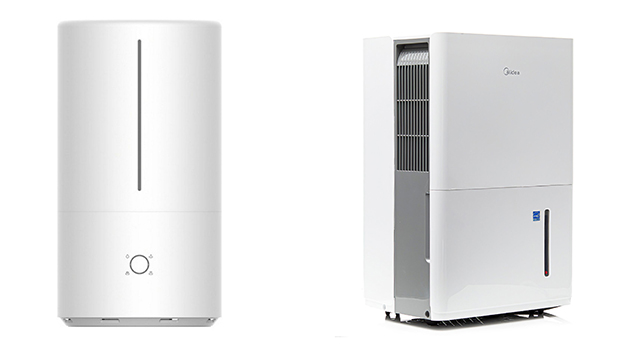- Smart Watch Payments and Digital Wallets in the Philippines - June 8, 2023
- Front-Load vs. Top-Load Washing Machines - May 25, 2023
- Pros And Cons Of Wireless Charging Power Banks - May 10, 2023
Maintaining the right level of humidity in your home can be a challenge, especially during summer. This is when you may need to turn on an humidifier or dehumidifier depending on how dry (below 35%) and/or humid it has been throughout this year so far – for example if there’s been more than 50% relative increase from last month’s readings then chances are high that these devices will come into play.
Humidifiers
There are two main types of humidifiers: cool-mist and warm-mist. They both add moisture to the air equally well, but there’s not necessarily an advantage for one over another depending on your personal preference because they create it differently in their own way; that said though if you’re looking at just a general idea about how these work or what differentiates them then here goes!
Humidifiers with cool mist technology are a great way to keep your air fresh and moisturized, even when you’re out of the house. These devices break up water into tiny particles that enter each room as vapor before dissipating back into its liquid form on contact with dry surfaces or hot elements like heaters in furnaces. The end result? Humidity levels remain high without any adverse effects such as mustiness due to chemical products!
A warm mist humidifier is a heating device that produces steam through boiling water. You can breathe in the cool vapor for therapeutic benefits and wellbeing, which also helps with respiratory problems like allergies or asthma!
Dehumidifier
Dehumidifiers does the opposite of humidifiers. A typical dehumidifier will reduce air humidity levels by at least 50%. It does this with its dual purpose fan which circulates cool moist outside air into hot dry inside spaces while also providing relief from allergies or other respiratory problems caused due to mold and mildew build up in homes prone to these ailments because they don’t have enough natural ventilation- perfect during summer months. Dehumidifiers are an essential part of fighting moist air. They help control and remove excess moisture from the environment, which can cause allergens like mold to grow more easily in your home or irritate those with respiratory conditions such as asthma by causing chronic sinusitis because it causes nasal congestion
Mechanical dehumidifier is an essential tool for any home. This most common type of device uses small fans to pull moist air over refrigerated coils and collect condensation on its surface in order to rid properties from excessive moisture levels through evaporation or absorption tactics – it works best when there’s hot weather outside with high humidity!
Absorption/Desiccant is another popular type of dehumidifier, this machine works by drawing moisture from the air and leaving behind a healthier environment. The process can be done through rotation with one end heated for faster results or slowly without any temperature alteration at all!
Capacity of Humidifier and Dehumidifier
Humidifiers and dehumidifiers are measured in different ways. First, humidifiers usually uses gallons as measurement, with a bigger tank needing less refilling. Meanwhile, dehumidifiers’ capacity is measured by the number of pints of water that is removed throughout the day.
Energy Consumption
The energy efficiency of a humidifier is much lower than that for dehumidifiers. Regardless if you need an appliance to efficiently maintain the humidity levels in your home, they both serve different purposes depending on their respective requirements and conditions under which they are used
You may want to keep a humidifier and dehumidifier on hand so that you can adjust humidity at home. The two devices work together well for maintaining safe, comfortable levels of air quality in your house during different seasons or when weather changes affect RH index levels

